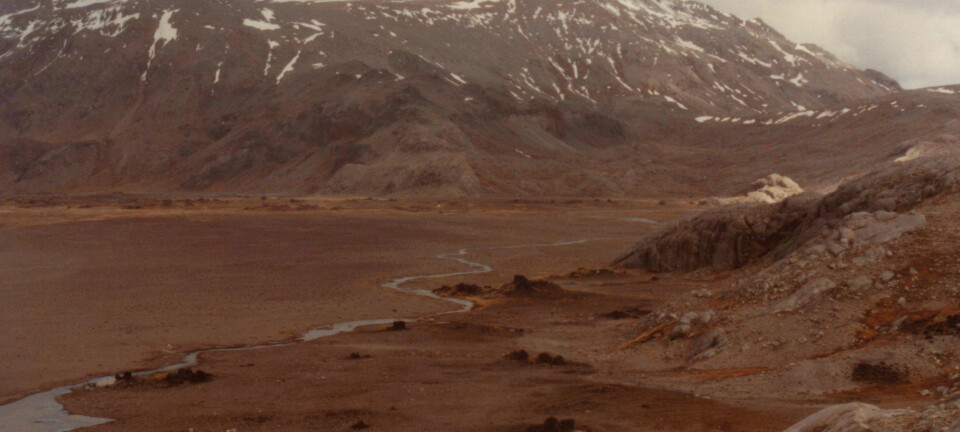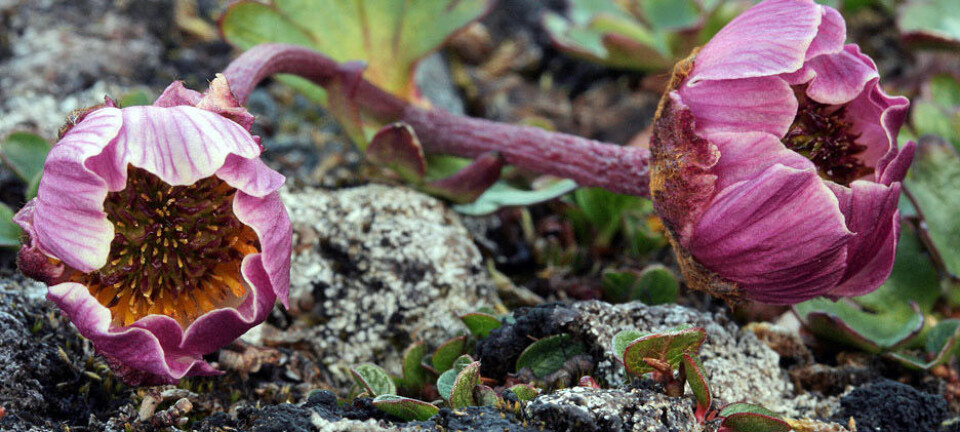An article from Norwegian SciTech News at NTNU

An arctic animal community crashes in response to extreme weather events
What happens when animals in harsh environments are exposed to extreme weather? Scientists found that extreme icing caused widespread die-offs in one arctic animal community. Climate change may cause more such extremes.
Denne artikkelen er over ti år gammel og kan inneholde utdatert informasjon.
These findings may be a bellwether of the radical changes in ecosystem stability that could result from anticipated future increases in extreme events due, the scientists warn. The findings are published in the 18 January issue of Science magazine.
The Norwegian scientists, with lead authors from the Centre for Conservation Biology at the Norwegian University of Science and Technology (NTNU), wanted to know how climate and weather events would effect an overwintering animal community on the high arctic island of Spitsbergen, Svalbard, at 78 degrees N latitude.
They chose this simple ecosystem because in the winter it is composed of just three grazing animals -- the wild Svalbard reindeer (Rangifer tarandus platyrhynchus), the Svalbard rock ptarmigan (Lagopus muta hyperborea), and the sibling vole (Microtus levis). The arctic fox (Vulpes lagopus) survives off of the grazers, mainly by eating reindeer carcasses.
Ice keeps grazers from their food
The big ups-and-downs in the community’s population numbers were mainly controlled by rain-on-snow events, the researchers found. Rain-on-snow is an extreme situation that locks the deep-frozen arctic tundra under a sheet of ice.

The ice keeps reindeer from grazing on their winter pastures and also deeply reduces the ability of the rock ptarmigan and sibling vole to find food. The result is that populations of all three species can crash at the same time in the winter and spring after the extreme weather.
However, because the arctic fox eats reindeer carcasses, its population didn't drop until a year after the big die-offs of grazing animals. Even though the simultaneous die-offs decreased the number of live prey available for foxes to eat, the high number of reindeer carcasses meant there was lots of food for foxes during the icy winter and the subsequent spring and summer. This led to high fox reproduction.
But in this situation, almost no reindeer carcasses will be available for foxes to eat during the following winter, mainly because the reindeer that survived the previous winter are stronger, and less reindeer are competing for the food that is available. However, none of the other grazing animals is able to recover in the summer after the icing. The result is a deep reduction in the arctic fox numbers one year after the grazers die off.
A whole community in lock-step
“We have known for a long time that climate can synchronize populations of the same species, but these findings suggest that climate and particularly extreme weather events may also synchronize entire communities of species,” says lead author Brage Bremset Hansen, from NTNU’s Centre for Conservation Biology.
“Svalbard’s relatively simple ecosystem, which lacks specialist predators, combined with large weather fluctuations from year to year and strong climate signals in the population dynamics of herbivores (grazing animals), are the likely explanations for how such clear climate effects can be observed at the ecosystem level.”
In other, more complex systems, he says, climate may cause community-level effects, but the complexity of the environment means they are harder to detect.
A domino effect on the food web?
Extreme rain-on-snow events are rare in most of the Arctic compared with Svalbard, where the climate is oceanic and mild for the latitude.
However, because a rapidly warming arctic climate may mean an increase in the number of rain-on-snow events, the authors warn that changes in winter climate and extreme events may have important implications for ecosystem functioning and stability in the circumpolar Arctic in the future.
“Previous studies have shown that rain-on-snow and icing can also cause vegetation damage and reduce survival of soil microbiota,” says Hansen. “But more importantly, we suspect that the strong effects of icing on the overwintering animal community have the potential to indirectly influence other species and cascade throughout the food web. The die-offs among resident herbivores shape predator abundance, which could in turn affect the migratory prey that reside in the area in the summer, such as sea birds and barnacle geese.”
































